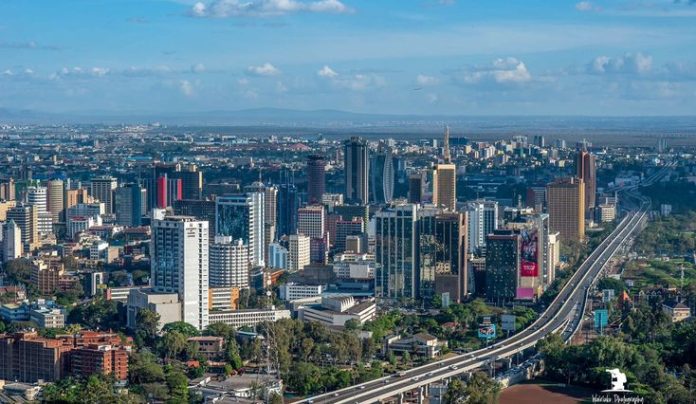On October 6, 2025, Kenya announced in Nairobi that it will establish a sovereign wealth fund and an infrastructure fund, financed initially by a partial sale of shares in the Kenya Pipeline Company, to curb heavy reliance on debt; President William Ruto said the sale could raise up to KSh130 billion (about US$1.01 billion), seeding vehicles that will channel capital into agriculture, power and strategic infrastructure, with operational details to follow once enabling steps under a new privatization law are executed.
The policy pivot is a response to arithmetic that has become untenable. Kenya’s debt service absorbed 68.3% of ordinary revenue in FY 2023/24, up from 58.8% the year before, after the Eurobond repayment and costly domestic refinancing, one of the most onerous burdens on the continent. Moving from new borrowing toward recycling state assets into productive investment is designed to lower funding costs and re-anchor confidence while the government discusses a new IMF-supported programme in Nairobi to shore up macro-stability and debt sustainability.

The first test case is instructive. Kenya Pipeline Company runs a 1,342-kilometre network that transports roughly 14 billion litres of petroleum products annually from Mombasa into the hinterland and neighbouring markets. Monetising a stake in a cash-generative, regulated asset can create a sizable endowment for the proposed funds without adding to sovereign liabilities. But it also places a fossil-fuel asset at the centre of a fiscal reset, raising a live question for sustainability-minded investors: can proceeds from a hydrocarbons pipeline be transparently ring-fenced to accelerate the transition, upgrading grids, de-risking renewables, and mainstreaming clean cooking, rather than entrenching status quo energy patterns? The answer will be in the term sheets and the governance.
Read also:Kenya launches COMESA e-Certificate of Origin, cutting border time and carbon
If the seed capital lands as planned, scale and structure will matter. Comparative yardsticks across Africa show what “credible” looks like. Nigeria’s Sovereign Investment Authority reports net assets of roughly ₦4.35 trillion after strong 2024 performance, giving it the heft to co-invest in toll roads, gas industrialization and renewables. Angola’s FSDEA discloses about US$3.99 billion in assets, while Botswana’s Pula Fund, part of the central bank’s reserves framework, sits in the US$3.5–4.1 billion range. Ghana’s Petroleum Funds together held around US$1.4 billion in early 2025. On this spectrum, a US$1 billion Kenyan launch would be meaningful but still modest; disciplined replenishment from future listings, dividends and mineral royalties would be required to build staying power.
Where sustainability meets macro-policy is in the funds’ mandate. The administration’s headline goal; lifting available generation from about 2,300 MW today toward an additional 10,000 MW to support industrialization, cannot be met by megawatts alone. It requires grid reinforcement, storage, regional interconnectors and tariff reform that unlocks private capital at lower risk premia.
Kenya’s renewables base gives it a head start, but financing the “unseen” components, dispatchable capacity, last-mile connections, smart metering, loss reduction, is where a well-governed infrastructure fund can move the needle for productivity and emissions. In agriculture, where climate shocks have cut yields across East Africa, investment in irrigation, cold chains and electricity-ready agro-processing plants can shift export baskets in favour of higher-value, lower-loss supply chains. The president’s framing, use the infrastructure fund to “boost farming” and expand power, will need to translate into bankable project pipelines aligned to clear decarbonisation metrics.
Read also: COMESA, World Bank launch $5bn ASCENT to power 100million people across Eastern and Southern Africa
Execution risks are real. Asset sales must clear legal and political hurdles and be timed to avoid undervaluation; Kenya’s new Privatisation Act provides the framework and five-year programmes, but market depth and governance will determine pricing. Listing even a minority stake of KPC on the Nairobi Securities Exchange, as officials have trailed, could broaden domestic ownership and improve disclosure, while also setting a template for future divestments. To keep the sustainability promise, the sovereign fund should adopt recognised standards (Santiago Principles–style transparency, climate-risk reporting, exclusion lists for new fossil expansion) and publish audited impact accounts so that citizens can see how shilling proceeds become megawatts, irrigated hectares and jobs.
The regional implications are practical. As countries from Nigeria to Angola and Botswana use wealth funds to smooth shocks and co-finance long-term assets, Kenya’s shift signals that fiscal consolidation and green industrial policy can be complementary rather than competing agendas. If Nairobi uses the KPC transaction to crowd in pension funds and insurers into regulated, climate-aligned infrastructure, with the sovereign fund anchoring, then the model becomes replicable for peers confronting the same debt-service squeeze. Conversely, if proceeds are swallowed by near-term gaps or parked in opaque vehicles, the opportunity will shrink to a one-off cash injection. The choice, now that the “why” is clear, is in the “how.”





